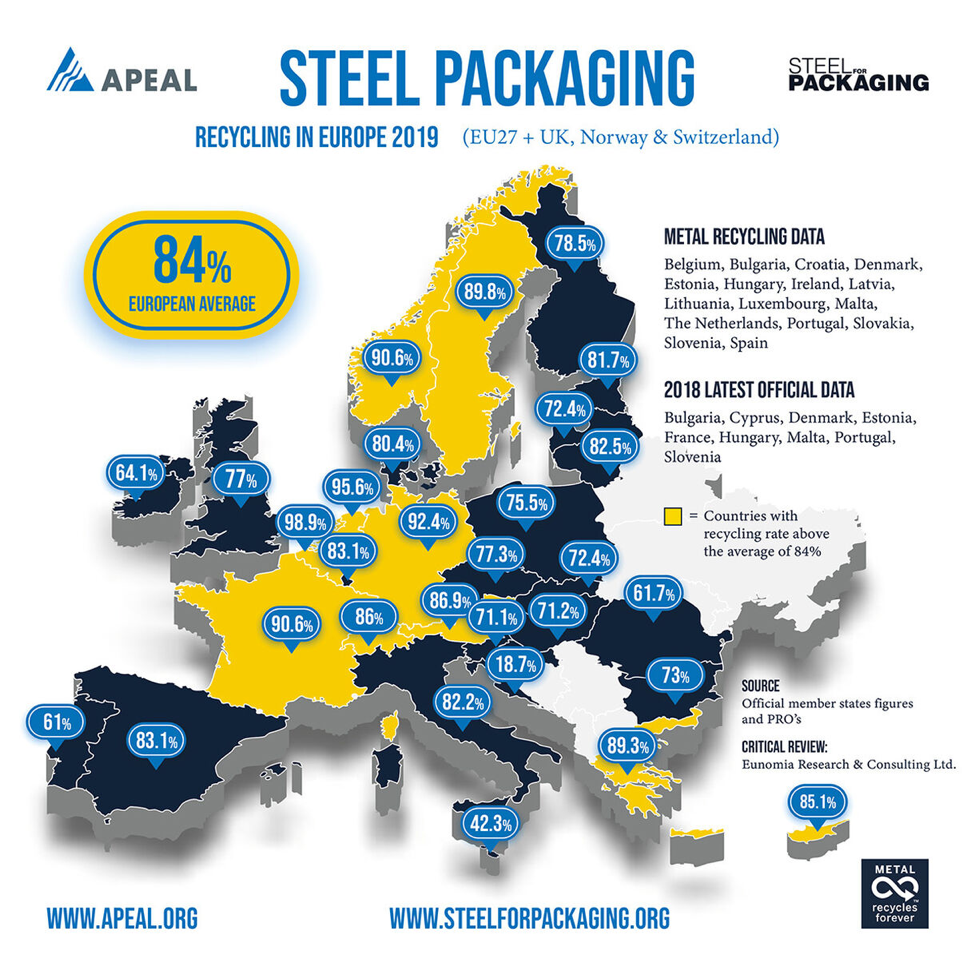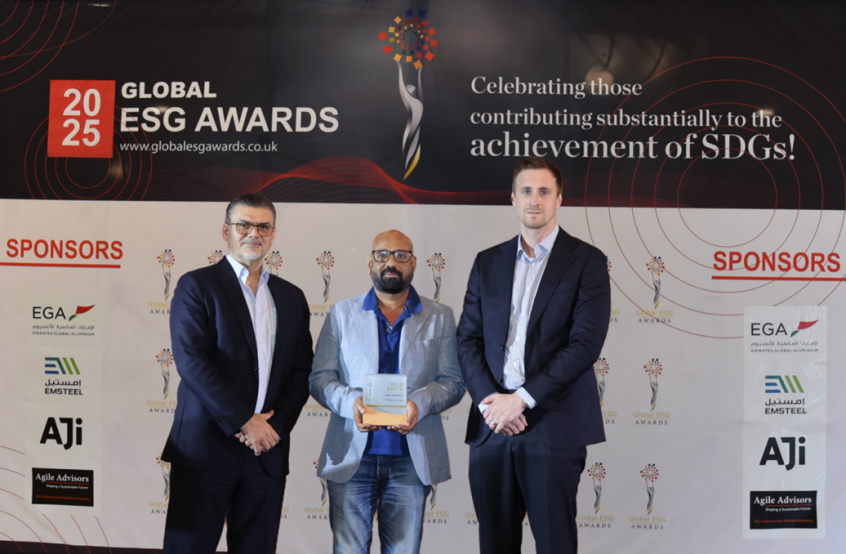Record Steel Recycling Rates in Europe

The environmental degradation that has taken placed over the past several decades could have serious consequences for the future of the planet if action is not taken swiftly. According to the UN, if the global population reaches 9.6 billion by 2050, the equivalent of almost three planets could be required to provide the natural resources needed to sustain current lifestyles.[1] Moving away from the traditional “take, make, dispose” approach to production and working towards a Circular model, which replaces waste with the continual use of resources, is the way forward.
Steel packaging continues to help drive the progress toward the Circular Economy in Europe. In 2019, the format achieved a record 84% recycling rate. The figure represents a 1.5% increase from 2018 and is the ninth consecutive year in which the overall recycling rate has risen. According to APEAL, the Association of European Producers of Steel Packaging, notable rises in countries such as Italy and Poland can be attributed to increased separate collection and greater public awareness of the benefits of steel recycling.
Alexis Van Maercke, Secretary General of APEAL, said: “Steel is circular by nature. Magnetic properties make steel easy to collect from any waste stream and, as a permanent material, it can be recycled over and over again without any loss of material quality. One hundred percent of recycled steel is used for new steel products – a bridge, wind turbine or even a new item of packaging.”
At Crown, we actively work with industry associations and groups around the world, including APEAL, to help promote the benefits of metal packaging to brands and consumers alike. Our commitment to promoting optimum circularity and supporting increased metal packaging recycling rates is reflected in our Twentyby30 program. We are dedicated to securing the future availability of natural resources and unlocking more value from the limited resources we have.
